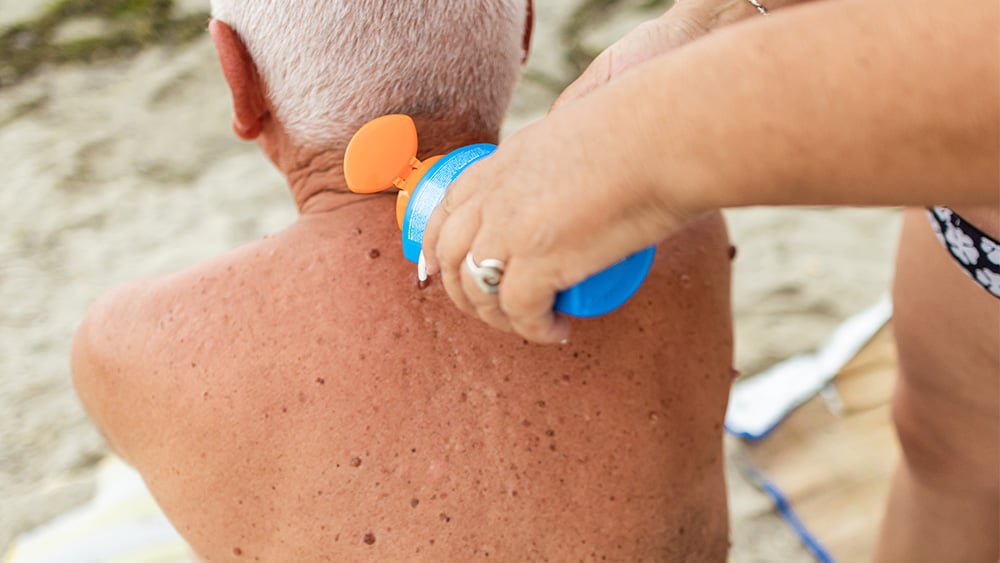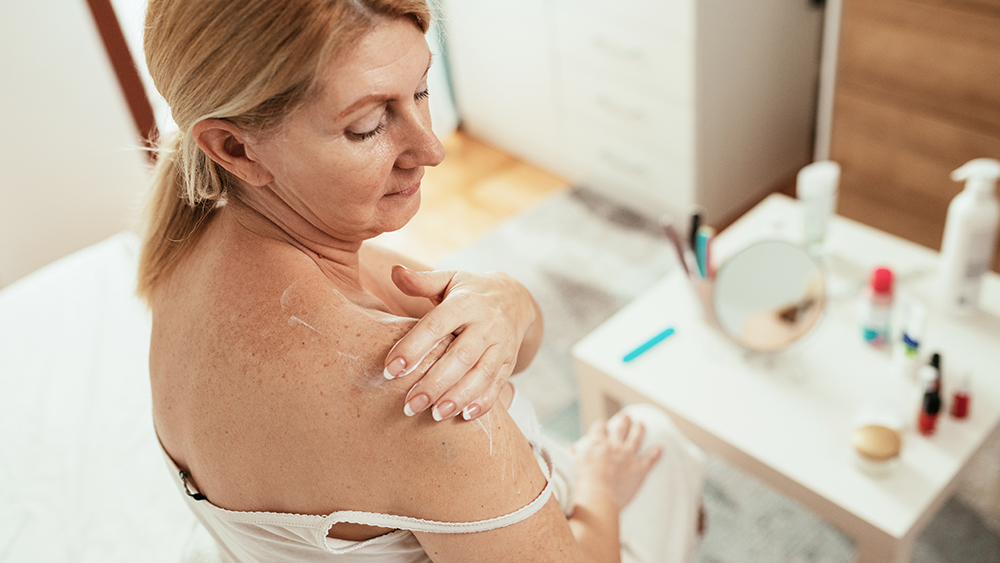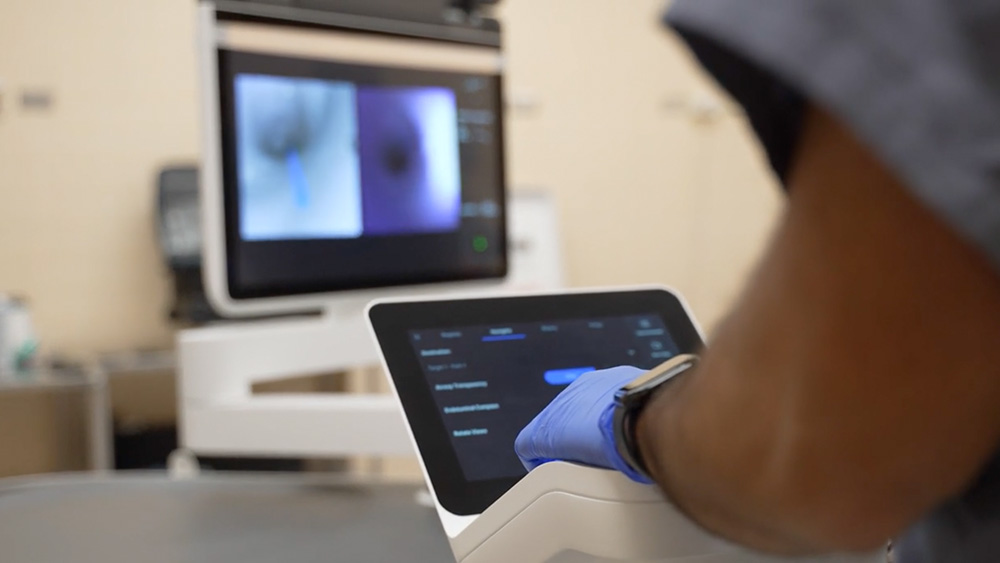Key Takeaways
- Risk factors for melanoma include UV radiation, age, lighter skin, sex, moles or freckles, family history, and environmental exposure.
- If you notice a spot or mole that has changing size, color, or shape, ask a dermatologist or your primary care provider to look at it.
- More than 99 percent of all localized melanoma cases are curable. The earlier the catch, the better chance of survival.
Melanoma is a type of skin cancer that forms in melanocytes – cells that color the skin, hair, and are linked to freckles and moles. While it is less common than most other skin cancers, melanoma accounts for the majority of skin cancer-related deaths.
Plenty of people ask, Is melanoma curable? The answer is a definite yes. Especially with early detection and newer treatments, roughly 75 percent of melanoma cases stay at the skin level – failing to spread further. Nearly all patients with localized melanoma survive their cancer diagnosis.
Christopher Yelverton, MD, is a dermatologist and Mohs micrographic surgeon at our Linden Oaks Medical Campus, and explains what causes melanoma, how it’s diagnosed and treated, and the best ways to prevent the disease.
Causes of melanoma
While the exact cause of melanoma is unknown, there are several clear risk factors that raise a person’s chances of developing melanoma.
Some of these risk factors include:
- Exposure to UV radiation (sunlight, tanning beds)
- Moles or freckles
- Lighter eye, hair, and skin color
- Family and personal history
- Age
- Weaker immune system
- Sex (men are twice as likely to die from melanoma than women)
- Environmental and occupational exposures
In the U.S., there are approximately 100,000 cases of melanoma each year. Of those cases, about 9,000 are fatal.
Diagnosing melanoma
You are the person who will pay the most attention to your own skin, so you are the person who will notice any changes before anyone else. This means you are often the first line of defense against melanoma.
The American Academy of Dermatology recommends checking for the ABCDEs when looking at a spot on the skin that may be melanoma.
- Asymmetry (not the same on either side)
- Borders are irregular
- Color variation
- Diameter (if it’s larger than 6mm – size of a pencil eraser)
- Evolution (how often is it changing)
If there is something on your skin that doesn’t look like anything else on your body, have a dermatologist take a closer look at it. For example, if you have a skin spot that has been flat for a long time and then suddenly becomes raised, that would be a cause for concern.
“We call this an ugly duckling sign – something that doesn’t look like everything else around it,” Dr. Yelverton said. “That’s when you see a dermatologist. We are experts in diagnosing and treating skin cancers.”
Once a patient schedules an in-office appointment with a dermatologist to diagnose a potential melanoma, the dermatologist will identify the spot and confirm whether it is suspicious.
The dermatologist will then use local anesthetic to numb the skin, remove the spot, and send the sample to a pathology lab for further analysis. Results are usually available within one week.
“If the suspicion is high that the spot is a melanoma, we find it is best to try to remove the entire spot,” Dr. Yelverton said. “Additionally, the more tissue you can provide to a pathology lab, the more accurate of a diagnosis they can make.”
Progression of melanoma
The National Cancer Institute groups melanoma into three stages: localized, regional, and distant.
Localized melanoma
Most localized melanomas are confined to the skin when they are diagnosed and treated by dermatologists. They have not spread beyond that surface level and mostly do not require extensive treatment. More than 99 percent of localized melanomas are survivable.
Regional melanoma
Once a melanoma spreads to the body’s lymph nodes or organs close to the skin where it originated, it becomes a regional melanoma. This will require additional treatment beyond removal of a spot. The survival rate of a regional melanoma is about 75 percent.
Distant melanoma
A distant melanoma has spread under the skin to nearby and more distant organs in the body such as the lungs or liver, hence its name. This requires extensive treatment beyond removal of any skin-based melanoma and has a survival rate of 35 percent.
Treatments for melanoma
Patients who receive a melanoma diagnosis will schedule an appointment within a few weeks to remove any portion of the melanoma that remains. Most of the time, the procedure is done in an office setting.
The removal process is similar to the biopsy, using local anesthetic to numb the affected area, then removing the melanoma, and closing the wound with stitches.
Recently, cancer research has led to more targeted therapies becoming available for patients with more advanced melanomas. Medical oncology providers at the Lipson Cancer Institute offer cancer injections and infusions in combination with other cancer treatments that work to target specific mutations in the tumor itself and boost your body’s immune system so it can better fight the cancer.
“In the past, advanced melanoma patients didn’t benefit from traditional chemotherapy in a way that would extend their lives,” Dr. Yelverton said. “Because of these newer therapies, we are seeing people actually living longer with advanced melanoma and going into remission than they used to.”
How to prevent melanoma
While it is impossible to control risk factors such as age, sex, family history, and natural skin color, there are ways to reduce your risk of developing melanoma.
Limit UV light exposure
Wear sunscreen, a shirt and hat to keep yourself from becoming overexposed to UV light from the sun. Avoid using tanning beds and sunlamps; these increase UV ray exposure, which increases the risk of melanoma.
Wear sunscreen
Sunscreen protects your skin from sun damage. Choose a sunscreen that covers a broad spectrum of UV radiation. Sunscreens containing zinc and titanium offer a good spectrum of protection.
Watch for new or changing moles
If you notice a new mole or an old mole that is changing, talk with your primary care provider or dermatologist about it.
“If you have a skin spot that has been flat for a long time and then suddenly becomes raised, that’s an example of something that could be a cause for concern,” Dr. Yelverton said.
Genetic counseling
Having a family history of melanoma doubles your risk of developing melanoma. Because certain melanomas have specific genetic fingerprints, cancer researchers can identify which ones may have a higher risk of occurring with other forms of cancer.
By doing genetic testing, providers can guide treatment further down the road and find more targeted therapies to better help a patient.
Get screened
It is possible to have melanoma for weeks or months and not be aware of it. Skin cancer screenings are an excellent way to have your skin checked for melanoma or other potential issues. If a provider sees you at a screening and identifies a possible melanoma, they will schedule an appointment for you to have it analyzed more closely.
“Early diagnosis and treatment really are the keys to melanoma management,” Dr. Yelverton said. “The earlier a melanoma can be detected, the earlier it can be treated.”










